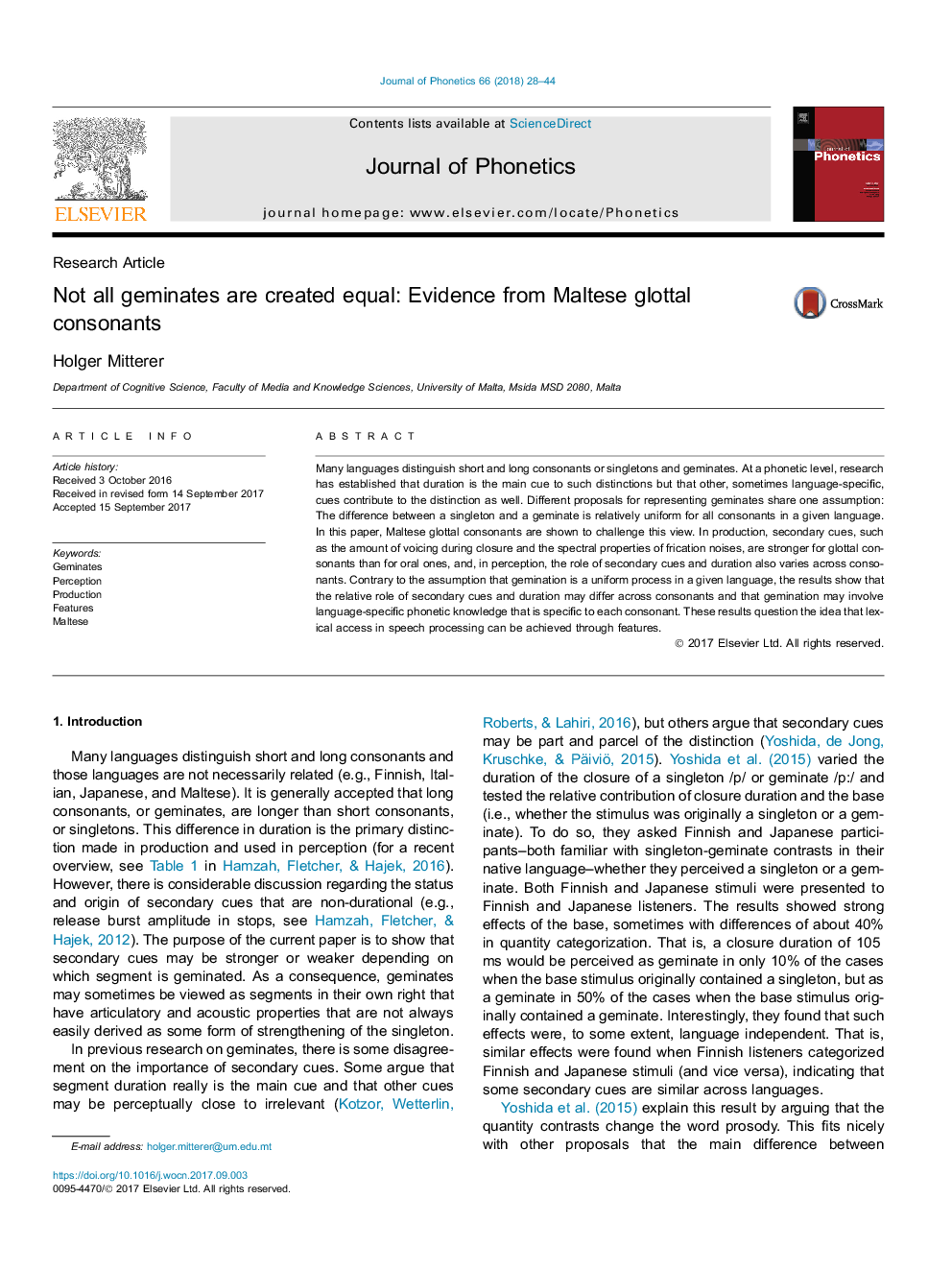| Article ID | Journal | Published Year | Pages | File Type |
|---|---|---|---|---|
| 5124046 | Journal of Phonetics | 2018 | 17 Pages |
â¢The perception and production of Maltese glottal consonants was investigated.â¢Results show stronger secondary cues for glottal than oral geminates.â¢The importance of durational cues is the inverse of the strength of secondary cues.
Many languages distinguish short and long consonants or singletons and geminates. At a phonetic level, research has established that duration is the main cue to such distinctions but that other, sometimes language-specific, cues contribute to the distinction as well. Different proposals for representing geminates share one assumption: The difference between a singleton and a geminate is relatively uniform for all consonants in a given language. In this paper, Maltese glottal consonants are shown to challenge this view. In production, secondary cues, such as the amount of voicing during closure and the spectral properties of frication noises, are stronger for glottal consonants than for oral ones, and, in perception, the role of secondary cues and duration also varies across consonants. Contrary to the assumption that gemination is a uniform process in a given language, the results show that the relative role of secondary cues and duration may differ across consonants and that gemination may involve language-specific phonetic knowledge that is specific to each consonant. These results question the idea that lexical access in speech processing can be achieved through features.
